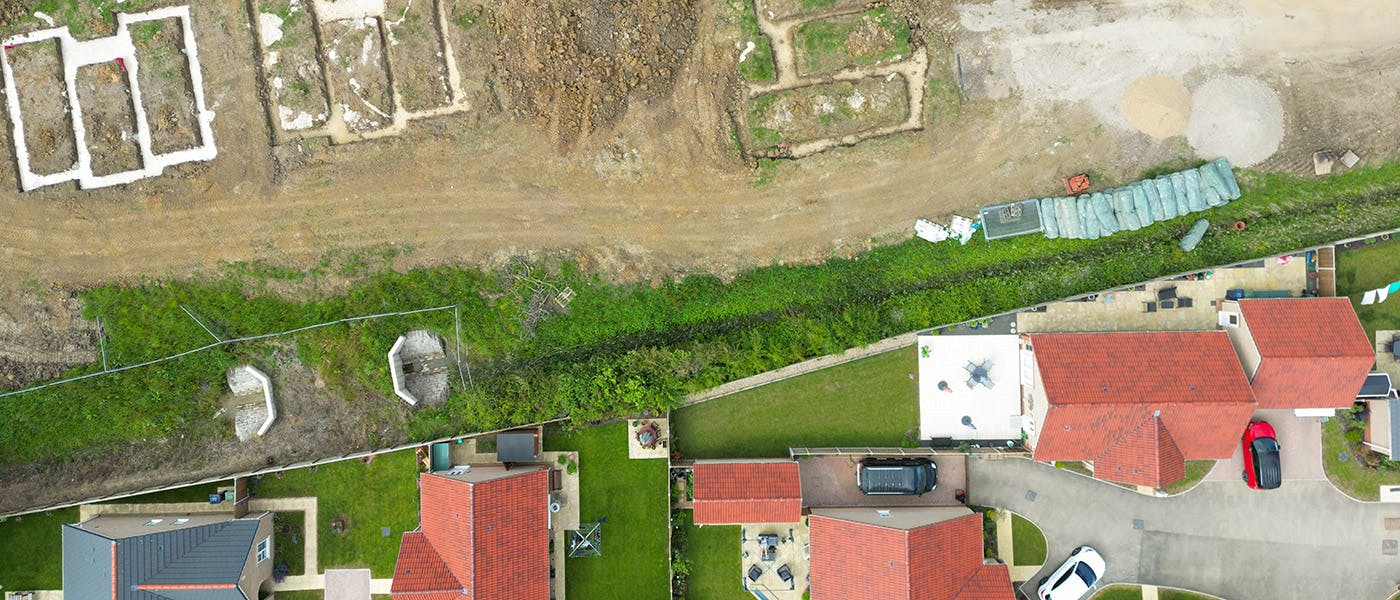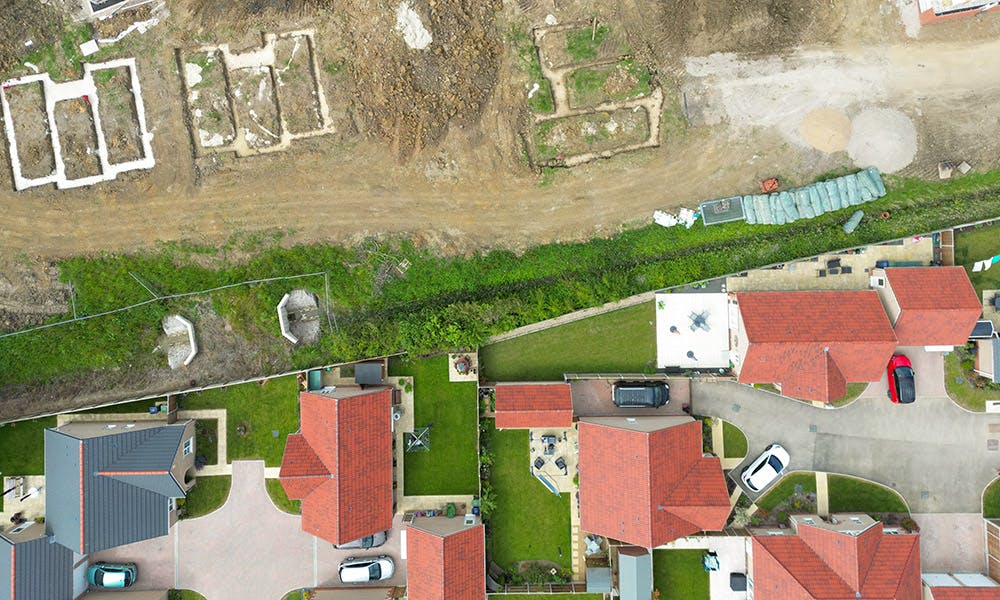
HM Land Registry: Foundations for a geospatial register
HM Land Registry is a non-ministerial department that safeguards land and property ownership valued at £8 trillion, ensuring that land and property rights in England and Wales are guaranteed and protected. It aims to become the world’s leading land registry for speed and simplicity, with an open approach to data.
With its ambitious digital transformation programme underway, HM Land Registry engaged Scott Logic as a high-quality, UK-based delivery partner. We were commissioned to share responsibility for the planning and delivery of a range of projects.

Paving the way to a geospatial Land Register
One such project concerned HM Land Registry’s geospatial data which holds a wealth of information on the geometries that describe the spatial extents of people’s titles and other interests in land.
Many of the systems that managed and consumed this data were put in place during HM Land Registry’s first move to digital over 30 years ago. While the systems were very successful during their lifetimes, they had not evolved. The technologies had become hard to support, and the data was not structured, stored, or managed in a way that allowed it to be leveraged for use cases beyond those established during the original digital transition.
HM Land Registry aim to transform this data into a standard, open format and create a modern geospatial Land Register.
Unlocking the value of its geospatial data will be a key enabler of HM Land Registry’s strategic goals, supporting the transformation of its casework systems and processes, and delivering standard capabilities that are expected of geospatial data and technologies. However, the data transformation is a complex challenge that will take several years to accomplish. A robust strategic plan was needed to ensure the transformation started out on the right path.
That’s why HM Land Registry called upon the support of Scott Logic during the programme’s early stages. We provided data architecture and engineering expertise to support the HM Land Registry team in investigating key uncertainties, designing and delivering proofs of concept, and laying the foundations on which the geospatial Land Register would be built.
Scott Logic’s insights were invaluable in helping us break down a very complex technical challenge into manageable fields of inquiry, and their encouragement to cultivate an iterative mindset will ensure we keep learning and improving our geospatial Land Register as the programme progresses.
Lynne Nicholson, Deputy Director for Data, HM Land Registry
Taking a deep dive into the data
We joined the in-house team at the start of the Discovery phase, helping decompose the problem space and investigate the technical feasibility of what HM Land Registry was setting out to achieve. One of the main focuses was a deep dive into the existing data and its data model.
The main formats in use were geospatial data in a proprietary format, unstructured digital images of scanned plans, and plans in paper format. None of the data formats could be integrated, and each relied on the others to provide comprehensive information.
For example, a Land Register record for a given title might refer linguistically to the “land tinted brown” on a scanned plan, but this was only decipherable by the human eye – it was not machine-readable data.
Consequently, it was critical for the team to validate that it was possible to transform these different data formats into a standard, machine-readable geospatial data format. This was challenging work, involving ‘archaeology’ to unearth characteristics and semantics of the data that weren’t captured in the documentation. Supported by our expertise, along with the proofs of concept that followed, the team validated that the data transformation was feasible.
The original project scope was simply to transform the data from a proprietary format to an open format. However, there was an opportunity at this stage to add significant value to HM Land Registry by rethinking the data structure and finding ways to solve some of the organisation’s wider challenges. We supported the team in making a successful case to broaden the programme’s scope to this end, which led to a series of proofs of concept.
Engaging stakeholders with the data transformation
The enlarged scope meant that the data transformation would have wider implications across HM Land Registry internally, for their customers and the wider economy. Through three proofs of concept, the team made those implications tangible to stakeholders, prompting them to identify how processes would need to evolve, and helping them see the potential of a geospatial Land Register.
We supported the technical design and delivery of each proof of concept, including the data architecture required to run them safely. We worked with HM Land Registry’s Security Architects to design and build a secure environment and geospatial data store, into which we could safely migrate real data from the Land Register. This was an essential step, allowing stakeholders and the team to gain insights from recognisable data, albeit via hypothetical scenarios.

The first proof of concept took a square area of Bristol as a sample and transformed the titles and interests from that area into the geospatial data format. This data was then visualised as a map, with the capability to toggle layers of data over it displaying different types of interest in land. To take the example of someone wishing to open a pub, it would be possible to overlay geospatial data showing where covenants restricted the sale of alcohol; this use case would be much more time-consuming to achieve with the older, title-centric data model. As a proof of concept, this helped open stakeholders’ eyes to the new capabilities the geospatial Land Register could offer.
The second proof of concept helped the team to validate that it was interpreting the complex source data correctly. We helped design and build a service over a key HM Land Registry system that provided a live view of all the data in a given record and displayed the team’s understanding of it for validation by stakeholders.
The third proof of concept was design-led and intended to support stakeholders in exploring the potential of a geospatial Land Register. We supported the team to create a clickable prototype based on the use case of a specific type of application to register land known as a ‘Transfer of Part’, where part of an existing title is transferred to another title. This hypothetical example helped stakeholders think through all the geospatial data implications and helped the team understand the ‘as-is’ processes, many of which were manual.
Establishing a new data model
Moving from the existing title-centric data model to a geospatial-centric one was not straightforward for HM Land Registry. With our support, the team assessed the Land Administration Domain Model (LADM) – globally recognised as ISO 19152 – and decided on the best way to use it. There were pros and cons of fully adopting the LADM standard, so the team instead used it as a reference in shaping a geospatial data model suited to the Land Register.
LADM provides a richer data structure than the old title-centric approach. It models Parties (individuals or organisations involved in land rights), Place (land parcels represented as spatial units, including their boundaries, characteristics, and legal status), and Interests (different types of interests in land, including ownership, easements, and restrictions). Replacing the title-centric model, the geospatial-centric model would integrate the Land Register’s hitherto segregated data formats and provide the new structure for the transformed data.
Adopting the new model would also impact the organisation’s processes. For example, information on title interests of neighbouring parties was previously stored against the two individual titles, and all of the existing processes were shaped around that data model. In the new model, this would be transformed into data relating to a geospatial area. Through proofs of concept like the ‘Transfer of Part’ example above, we supported stakeholders in exploring the impact on existing processes and identifying possible future approaches.

Laying solid foundations
By the end of our engagement, we had supported the team in securing broad stakeholder engagement with the geospatial Land Register and the value it would bring. This built a real sense of momentum as the project mobilised into a strategic programme.
Having applied our data expertise in helping the team lay solid foundations, we made sure that HM Land Registry was well-placed to build from there. We helped decompose the future work into workstreams that different teams could take forward. We also helped foster an iterative mindset suited to the complexity of the work ahead; there were still uncertainties to resolve, so the programme teams needed to remain open to testing, learning and adapting as the work progressed.
In this way, we supported HM Land Registry to mitigate the technical risks inherent in the old geospatial data formats and technologies and to embark on its data transformation journey.
With the delivery of the geospatial Land Register, the organisation will be able to leverage and analyse its data in previously unfeasible ways, transforming its casework. It will be able to maintain and operate the geospatial Land Register using simple, standard, modern technologies that are interoperable with other systems. And it will be able to unlock Land Register data and share it with third parties in ways that have the potential to create untold value for HM Land Registry and UK citizens.

